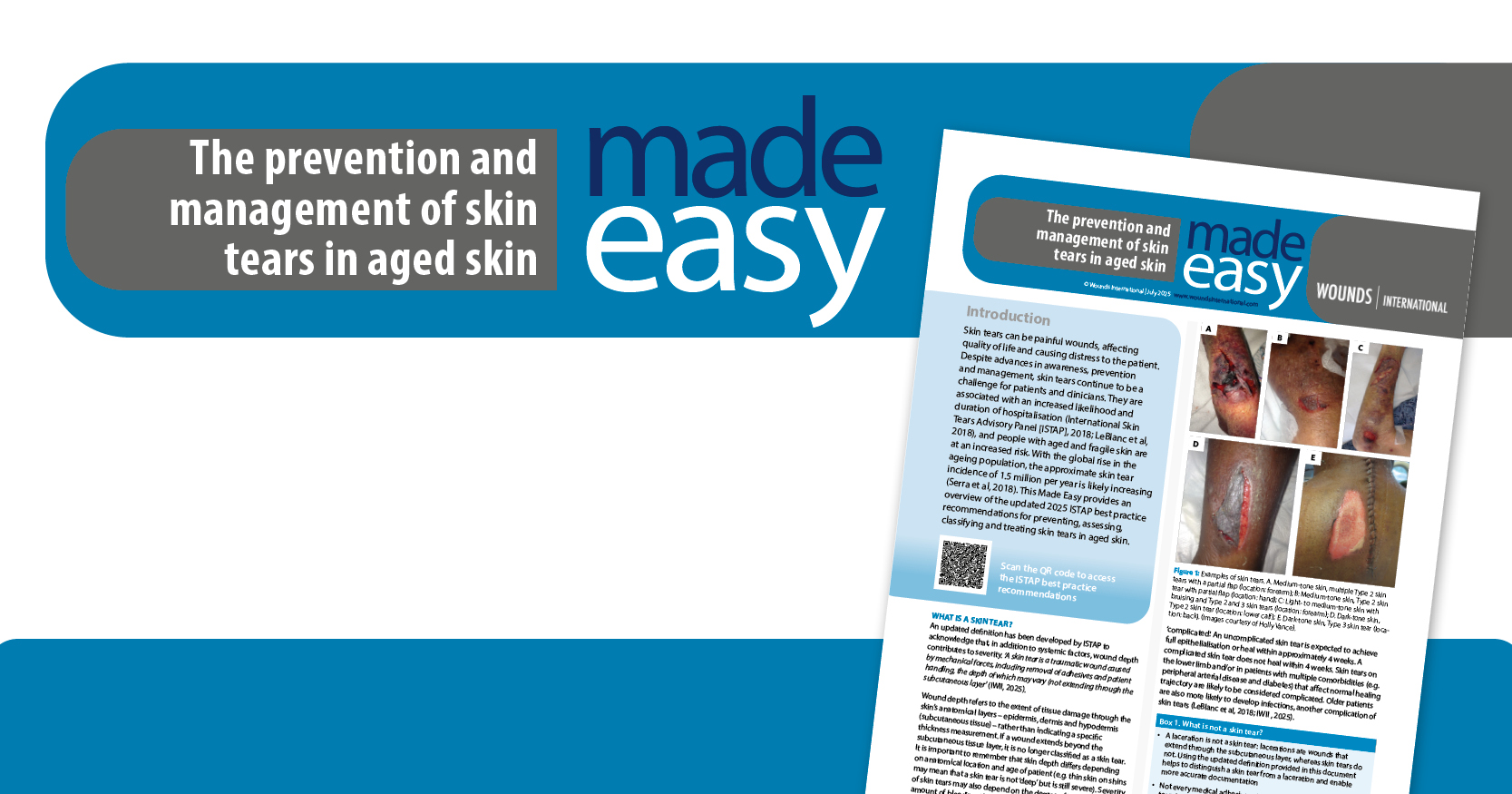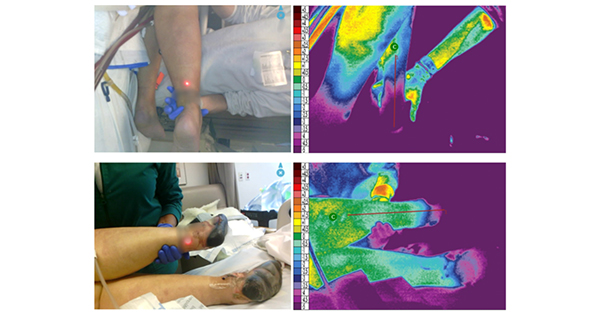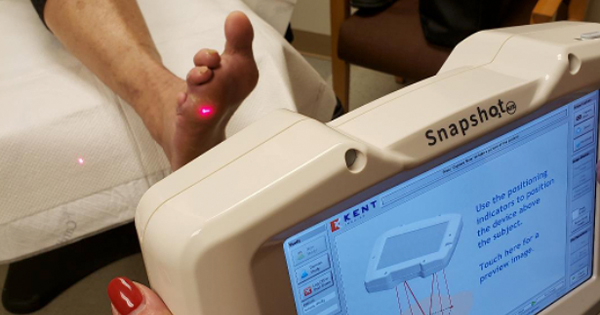Lymphoedema is a chronic and debilitating condition that can arise as a consequence of cancer treatment, particularly lymph node dissection and radiation therapy. It is characterised by the accumulation of protein-rich fluid in the interstitial spaces, resulting from a disruption in the lymphatic transport system (International Society of Lymphology, 2020). Cancer-related lymphoedema is one of the most distressing and underestimated complications of cancer treatment (Chaput & Ibrahim, 2023). It affects a substantial number of cancer survivors, with estimates suggesting that up to 40% of breast cancer patients (Armer and Stewart, 2010; Pereira et al, 2017), 25% of gynaecological cancer patients (Hayes et al, 2017; Khutjwe and Vuyiswa, 2018), and 18% of melanoma patients (Deban et al, 2022) develop lymphoedema following treatment.
Lymphoedema can be debilitating, with associated subjective symptoms, such as feelings of heaviness, numbness, or tingling, which are often reported before the detection of significant extremity volume changes and fluid pockets (Hidding et al, 2016; Tidhar et al, 2022). Untreated lymphoedema can progress over time and lead to severe complications, such as cellulitis, lymphangitis, septicaemia, and even amputation (Burian et al, 2024). Beyond physical discomfort, it can profoundly affect a survivor’s quality of life (Sun and Armer, 2019), often leading to functional limitations and psychological distress (Hayes et al, 2017; Sun et al, 2020). Early detection and treatment of lymphoedema are, therefore, important in reducing the risk of progression and complications and impact on economic and healthcare resources (Armer et al, 2018; Gençay Can et al, 2019; Koelmeyer et al, 2021).
The Lymphedema Breast Cancer Questionnaire (LBCQ) is a semi-structured interview or self-administration tool designed to assess indicators of lymphoedema (n=38), their frequency, and symptom self-management strategies. It was developed based on a critical literature review, Leventhal’s Common-Sense Model, and qualitative research involving interviews with breast cancer survivors. Clinical experts reviewed the tool while it was initially tested with breast cancer survivors. The LBCQ elicits responses regarding 19 symptoms occurring currently or in the past year. Participants indicate whether each sign or symptom is present (“yes” or “no”). Scores for total current symptoms and total symptoms in the past year are calculated, with a maximum total symptom score of 38 (Armer et al, 2003).
The Gynecologic Cancer Lymphedema Questionnaire (GCLQ) is an adaptation of the LBCQ by Lockwood, modified to assess symptoms of lower limb lymphoedema (LLE) in gynaecologic cancer survivors (unpublished data). Carter et al (2010) further modified Lockwood’s version into a brief, 20-symptom assessment tool with four supplemental items to determine patients’ awareness of their lymphoedema diagnosis and utilisation of lymphoedema self-management.
The Melanoma Lymphedema Questionnaire (MELQ) is a modified version of the LBCQ and the Gynecologic Cancer Lymphedema Questionnaire (GCLQ), adapted to assess upper and lower extremity lymphoedema symptoms in melanoma patients. Developed by Cormier et al. (2009) at the MD Anderson Cancer Center, MELQ includes the 19-symptom items from LBCQ (Cormier et al, 2010). MELQ has been used in research studies to evaluate lymphoedema-associated symptoms in melanoma patients undergoing sentinel lymph node biopsy (Hyngstrom et al, 2013).
This review aims to examine the research characteristics of primary studies utilising the lymphoedema symptom assessment questionnaires, including the LBCQ, GCLQ, and MELQ.
Methods
Search strategy
This systematic review followed the Preferred Reporting Items for Systematic Reviews and Meta-Analyses (PRISMA) guidelines (Figure 1). Six databases (CINAHL, PubMed, Scopus, Google Scholar, PsychINFO, and Cancer Net) were searched for publications between January 1998 and December 2018 using relevant MeSH terms and keywords related to the LBCQ, GCLQ, and MELQ. The search terms included combinations of “lymphoedema,” “breast cancer,” “gynaecologic cancer,” “melanoma,” “questionnaire,” “symptom assessments,” and related variants. Additionally, reference lists of retrieved articles were manually searched for relevant studies within the specified time frame.
Eligibility criteria
Studies were eligible for inclusion if they provided information on the usage of the LBCQ, GCLQ, and/or MELQ, were primary research, and were published in English between 1998 and 2018. Articles that did not focus on the utilisation of these lymphoedema symptom tools in the context of lymphoedema were excluded.
Data extraction and synthesis
The search results were screened, and potentially eligible studies were identified based on title and abstract review. Duplicate entries were removed, and full-text articles were obtained for studies that provisionally met the inclusion criteria. The data extraction and synthesis process followed the PRISMA guidelines. Full-text articles were thoroughly reviewed, and relevant information, including study purpose, sample characteristics, findings, and disciplines, were extracted and organised into a literature matrix (Table 1).
Results
The search yielded a total of 210 results across the databases, including CINAHL, PubMed, Scopus, Google Scholar, PsychINFO, and Cancer Net. After screening and removing duplicates, 91 full-text articles were reviewed, while two studies were identified from the reference lists of included articles. A total of 31 studies were included in the final synthesis (Table 1).
Study characteristics
Country of adoption
The majority of studies (n=26, 83.87%) reported the use of the LBCQ, GCLQ, or MELQ in the US. Other countries represented included the UK (n=2), South Korea (n=2), and South Africa (n=1)(Bulley et al, 2014, 2013; Choi et al, 2015; Lee et al, 2018; Khutjwe, 2018). The GCLQ-K was adapted for the Korean culture and population, while the GCLQ-7 is a concise, 7-item version of the GCLQ-K, maintaining comparable discriminative ability to the original questionnaire (Lim et al, 2014; Kim et al, 2017).
Sample characteristics
Sample sizes ranged from 1 to 936 participants. Most participants were Caucasian, with reported mean ages ranging from 49.9 to 63.6 years. The study populations included breast cancer survivors with and without lymphoedema, patients with gynaecological cancers (uterine, endometrial, cervical, and vulvar), and patients with melanoma. These populations comprised cancer patients receiving follow-up care, as well as those actively undergoing surgery, chemotherapy, and/or radiotherapy.
Settings
The participants were recruited from diverse settings across the included studies. The majority were recruited from university-affiliated cancer centres (n=14, 45.16%) and academic/university hospitals (n=6, 19.35%). Other recruitment sites were reported as cancer centres (n=3, 9.68%), general hospitals (n=1, 3.23%), breast clinics (n=1, 3.23%), outpatient clinics (n=1, 3.23%), breast centres (n=1, 3.23%), cancer centres and community centres (n=1, 3.23%), and private settings (n=1, 3.23%). One study (3.23%) recruited participants through the National Lymphedema Network website, support groups, and breast cancer conferences. The setting was not reported in one study (3.23%) (Table 1).
Study designs
The included studies employed a variety of research designs: cross-sectional (n=17), prospective (n=9), secondary data analysis (n=3), retrospective (n=1), and a case report (n=1). The cross-sectional design was the most commonly used, followed by prospective studies.
Disciplines of researchers
The lymphoedema symptom assessment tools were utilised by researchers from diverse disciplines, including nursing (n=22), medicine (n=10), education (n=2), surgery (n=5), gynaecologic oncology (n=2), obstetrics and gynaecology (n=2), family studies (n=1), psychiatry and behavioural sciences (n=1), engineering (n=1) and anaesthesiology and pain medicine (n=1). More than half of the studies (n=19) were conducted by multidisciplinary teams, highlighting the collaborative nature of lymphoedema research and the applicability of these tools across various healthcare specialities.
Validity and reliability of lymphoedema assessment tools
Studies have reported that the LBCQ demonstrates high face and content validity and exhibits high reliability, with internal consistency ranging from 0.785 to 0.82 and a test-retest reliability of 0.98 (Armer et al, 2003; Gordon et al, 2009). The validity and reliability of the LBCQ have been supported by references in 18 articles, as detailed by Armer et al. (2004, 2003). Studies reported good construct and face validity of GCLQ, as well as its high internal consistency reliability (Cronbach’s alpha = 0.95) (Carter et al, 2010). Five articles referred to the reliability of the GCLQ, as reported by Carter et al (2010). Evidence regarding the validity and reliability of the MELQ was not identified separately from the LBCQ in the included studies. In a validity study of the Morbidity Screening Tool, Gordon et al (2009) reviewed the validity and reliability of four subjective questionnaires, including the LBCQ, for evaluating breast cancer-related lymphoedema. Both the LBCQ and a telephone questionnaire were found to specifically address the physical symptoms of lymphoedema and effectively discriminate between women with and without breast cancer-related lymphoedema.
In a study comparing various lymphoedema measurement methods, the LBCQ was utilised alongside other tools to assess prevalence. The findings revealed that the LBCQ estimated a prevalence of 23.9%, aligning closely with other methods and demonstrating its reliability in population-based assessments (Bulley et al, 2013).
Discussion
This review provides a comprehensive overview of the study characteristics involving the LBCQ, GCLQ, and MELQ. It highlights the diverse range of clinical and community settings for participant recruitment, predominantly from university-affiliated cancer centres and academic hospitals, enhancing the generalisability of findings and underscoring the applicability of these questionnaires across various healthcare and community contexts. The review also examines the diverse study designs, ranging from cross-sectional to prospective and secondary data analyses. It emphasises the multidisciplinary nature of the research teams, highlighting the broad relevance and utility of the LBCQ, GCLQ, and MELQ in lymphoedema assessment and management. Additionally, it presents evidence of the strong psychometric properties, validity, and reliability of the LBCQ and GCLQ, while noting the absence of separate validity and reliability data for the MELQ.
Widespread utility and adaptations
The LBCQ, GCLQ, and MELQ have been extensively utilised across various geographical locations, research designs, populations, settings, and disciplines. These tools have demonstrated efficacy in assessing symptoms of upper and lower-extremity lymphoedema in research studies (Carter et al, 2019). The adaptation of GCLQ and MELQ from the initial LBCQ enables the comparison of lymphoedema symptoms across multiple cancer diagnoses. Moreover, the successful adaptation of the GCLQ for use in non-English-speaking countries demonstrates its feasibility and reliability in diverse linguistic contexts, thereby promoting its cross-cultural applicability (Bjerre Trent et al, 2023; Lim et al, 2014). Furthermore, the briefer GCLQ-7 version promotes time-efficient assessments during follow-up evaluations.
Versatility and interdisciplinary collaboration
The use of these lymphoedema assessment tools in various settings, including university-affiliated cancer centres, outpatient clinics, and private settings, demonstrates their versatility and potential to reach a broader population of survivors. Additionally, the utilisation of these tools across different research designs, from case reports to cross-sectional, prospective, and retrospective studies, highlights their applicability in generating diverse levels of evidence. The range of validity and reliability reported for these tools underscores their suitability for assessing lymphoedema in breast cancer, gynaecological cancers, and melanoma. Furthermore, their use across cultures promotes cultural humility in healthcare, which is essential for successful outcomes, while their application across disciplines facilitates interdisciplinary collaboration and team science (Little et al, 2017; Foronda, 2020; Anderson et al, 2022).
Assessing the multidimensional impact on patient well-being
The LBCQ is acknowledged as a valuable instrument for exploring various aspects of lymphoedema beyond mere physical measurements. Studies have demonstrated that subjective tools, such as LBCQ, capture the functional and emotional dimensions of lymphoedema, making it useful for monitoring multiple facets of the patient experience (Bulley et al, 2013). A study comparing objective and subjective measurement tools found that quality of life scores differed significantly between women with and without lymphoedema when using subjective measures, such as LBCQ (Bulley et al, 2013). This suggests that LBCQ can capture important aspects of lymphoedema that impact patients’ quality of life (Eaton et al, 2020; Sun et al, 2020).
Limitations and recommendations
While a rigorous systematic search was conducted, it is possible that some studies utilising these tools were overlooked due to inconsistent naming conventions or lack of explicit tool identification in the text. Although these unreported usages may influence practice and research, they were not captured in this review. It is recommended that LBCQ, GCLQ, and MELQ should be utilised in settings managing patients with breast cancer, gynaecological cancer, and melanoma, respectively, to aid in early detection and management of lymphoedema, thereby preventing complications and enhancing the quality of life (Kayıran et al, 2017; Sun et al, 2024). For non-English speakers, prospective users can contact the tool developers for permission to translate and adapt the tools through established processes.
Future studies should incorporate these subjective tools alongside objective measures to accurately assess lymphoedema and its impact on breast cancer survivors (Bulley et al, 2013). Researchers should ensure accurate reporting of research settings and provide clear tool identification to promote awareness and utilisation. Additionally, when adapting these tools to new settings, languages, and populations, psychometric evaluations should be conducted to ensure continued efficacy in supporting better patient care and research outcomes.
By highlighting the widespread utility, psychometric robustness, and versatility of the LBCQ, GCLQ, and MELQ, this discussion emphasises their value as comprehensive lymphoedema assessment tools. Their adaptability across cancer types, settings, and cultures underscores their potential to facilitate early detection, interdisciplinary collaboration, and improved patient outcomes in lymphoedema management (Armer et al, 2016).
Conclusion
Accurate and timely diagnosis of lymphoedema through the use of valid and reliable assessment tools is crucial for establishing effective treatment, especially in the early stages of the condition. The study findings robustly endorse the use of lymphoedema self-reported symptom instruments (LBCQ, GCLQ, MELQ) in research. These tools effectively assess cancer-related lymphoedema in both upper and lower extremities, spanning breast cancer, gynaecologic cancer, and melanoma. Their extensive utilisation in diverse settings, languages, and continents renders these tools invaluable for patients with cancer-related lymphoedema and the clinicians and researchers supporting them.
Acknowledgements
The LBCQ development and collaborations for subsequent adaptation of the initial instrument were carried out at the University of Missouri Sinclair School of Nursing with the support of the American Lymphedema Framework Project team.





